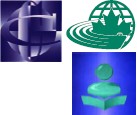Publications
Culture, Tourism and the Centre for Education Statistics
Summary Elementary and Secondary School Indicators for Canada, the Provinces and Territories, 2006/2007 to 2010/2011
Summary Elementary and Secondary School Indicators for Canada, the Provinces and Territories, 2006/2007 to 2010/2011
Archived Content
Information identified as archived is provided for reference, research or recordkeeping purposes. It is not subject to the Government of Canada Web Standards and has not been altered or updated since it was archived. Please "contact us" to request a format other than those available.

The data
The Elementary-Secondary Education Statistics Project (ESESP, now renamed) started as a pilot project that was first introduced by Statistics Canada (STC) in 2003. The survey content originates from three (3) tables which were originally part of a survey that was sent out each year to all provinces and territories by the British Columbia Ministry of Education. Following formal consultation with all provinces, territories and data users, seven (7) new tables were introduced by Statistics Canada to collect additional data. The goal of this project is to collect elementary/secondary expenditure data and to replace several surveys which were used for the collection of enrolment, graduate, and educator data. These included the former Elementary-Secondary School Enrolment Survey, the Secondary School Graduate Survey, the Elementary-Secondary Education Staff Survey and the Principal's Statistical Report as the official collection tools for elementary-secondary enrolments, graduates, and staff data. Although this project collects expenditure data, the Survey of Uniform Financial System – School Boards survey remains active. The main objectives of this collection tool are to produce relevant, comparable and timely statistics and to reduce the respondent burden on educational organisations and school principals.
In January 2010, the name of the ESESP changed to the Elementary-Secondary Education Survey (ESES) to symbolize the change from a pilot project to an on-going core survey of Statistics Canada.
Changes in Data Collection
Private School Data Collection: In the summer of 2010, Statistics Canada conducted a jurisdictional review and was able to ascertain that the data collected on the ESES for public schools, Enrolment (grade), Enrolment (age), Minority Language, Graduates and Educators could also be provided by jurisdictions for private schools. Therefore, in January 2011, Statistics Canada commenced collection of private school data for the 2009/2010 collection period.
Home Schooling Data Collection: In the summer of 2011, Statistics Canada conducted a jurisdictional review and was able to ascertain that the data collected on the ESES for public schools, Enrolment (grade), Enrolment (age) could be provided by jurisdictions for home schooling. Therefore, in January 2012, Statistics Canada started collecting home schooling data for the 2011/2012 collection period.
Note to readers
Readers should keep in mind that percentage changes may be substantially larger for categories with small numbers than for those with large numbers.
While numbers in tables are rounded, all calculations were performed on unrounded values. Therefore, summing the table values may not correspond to the displayed totals.
The charts display public school data only.
The number of graduates is at the end of the school year, while population estimates are as of July 1 of the corresponding school year. Late graduates are included in the calculations. The four programs that comprise the graduate pool are: regular programs for youth, adult upgrading programs (GED), vocational programs for youth and vocational programs for adults.
All data, including financial data, are subject to revision.
- Date modified:
